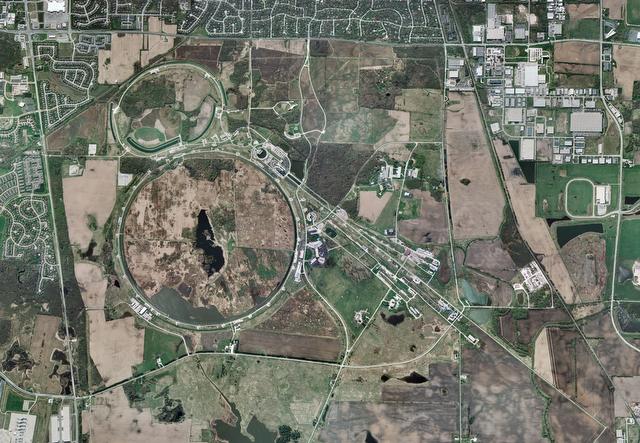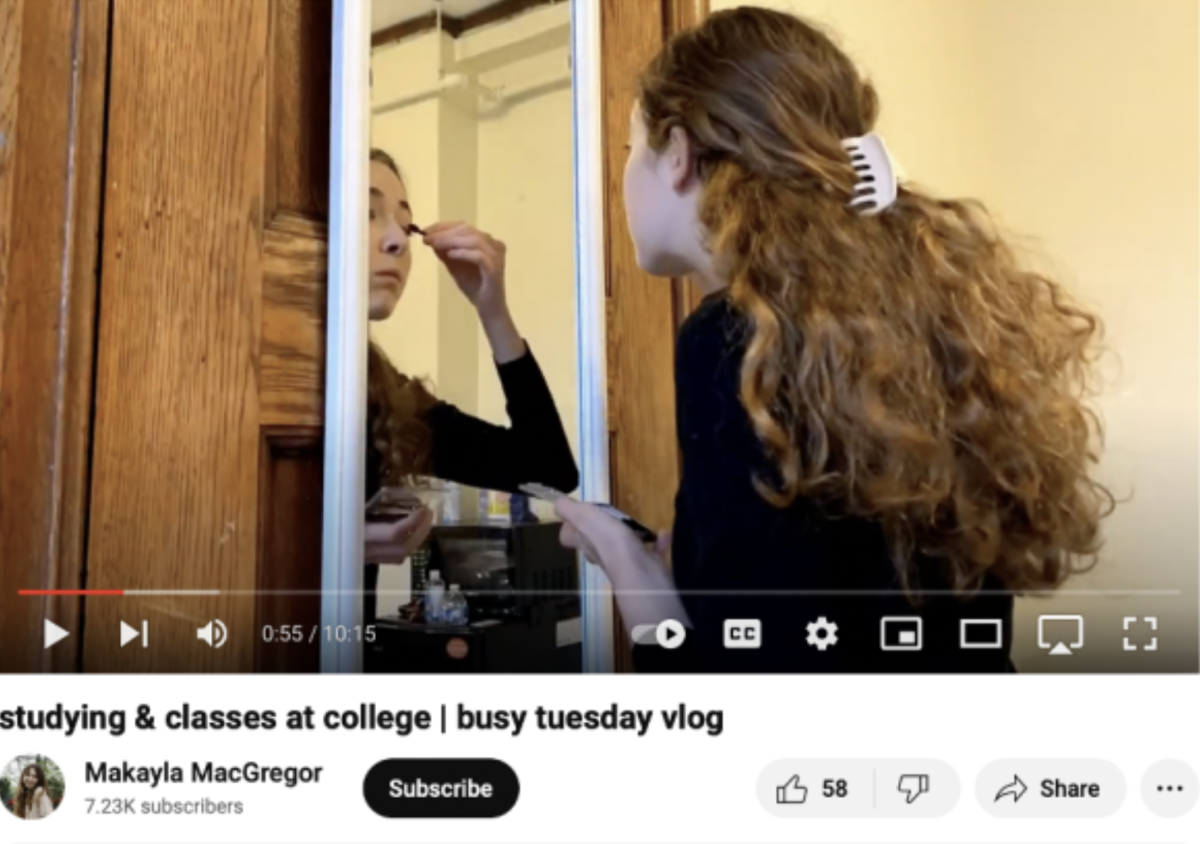With the Large Hadron Collider (LHC), a monstrous new particle accelerator, slowly powering up deep underground in the Swiss mountains, particle physicists are examining some of the most important data the field has produced in years. Global attention is focused on the LHC project, yet some of the biggest news isn’t coming from the collider, nor is it about the Higgs boson, the so-called God particle the LHC was designed to produce. Rather, it originates about 50 miles from Hyde Park, where the University of Chicago-run Tevatron—the largest particle accelerator in the world after the LHC—recorded an unexpected statistical deviation that might uncover an unforeseen subatomic particle. If it does, it could alter our understanding of the structure of the atom.
Announced in April, the news came as something of a shock to those who know the Tevatron is closing this September. Fermilab, the U of C associate that oversees the Tevatron, could not secure federal funding to extend the life of its accelerator, which the LHC renders obsolete. “The LHC, because it has much more energy, is more capable of exploring the full range of where the Higgs is,” explained Pier Oddone, director of Fermilab and adjunct professor of physics. “If we don’t find it here in the next year, we may be able to prove that it is unlikely that the Higgs exists. It would be easier for us to do that than to find it. Then the game really moves to the LHC.”
Without the Tevatron, the laboratory will have to adapt to stay relevant, though that won’t be much of a problem, according to Oddone, an expert on subatomic particles who was elected to the National Academy of Sciences May 3. One week later, Grey City spoke to Oddone about the search for the Higgs boson and other particles, Fermilab’s somewhat uncertain future, and whether Fermilab competes or collaborated with the LHC.
Grey City: News reports in April were ebullient over the possibility that Fermilab scientists found a new particle in the atom. What could it be?
Pier Oddone: What we’ve seen could be a new particle that cannot be explained by the standard atomic model. It would have to be a completely different particle than the Higgs. There are several theoretical papers now trying to explain what that particle might be. When you do this kind of work, all the papers are statistical. That’s really based on an analysis of a bump, which is a three-and-a-half standard deviation bump. So if you take more data, it might go away or be confirmed. If it’s confirmed, it’s a really big discovery, but we are not claiming a discovery at this time.
GC: How was the news that the Tevatron might have found a new particle received at Fermilab?
PO: It’s a very good feeling that we’ve been able to stretch the machine to get this level of performance. We had various people give talks at the American Physical Society meeting in Anaheim a couple of weeks ago, and the guy who built the Large Hadron Collider said he never in his life would have believed that the Tevatron could achieve such a high level of performance. The fact that we have been able to even get close to this territory is a fantastic achievement.
We are colliding protons with antiprotons. But you know, you don’t go to the store and buy antiprotons. You have to make them. When you make them, you have to condense them…with something we call stochastic cooling—sensing them and punching them with electromagnetic forces. You then put them collinearly with a beam of electrons to cool them further so you can inject them into the Tevatron. We basically manufacture protons for a day and then we inject them in the Tevatron. This whole machinery involves eight or nine accelerators and has to work like clockwork. It’s very challenging.
GC: How much do your results have to be corroborated by other experiments?
PO: People can make mistakes in analysis; that’s why you have to wait for your collaborators to confirm that the experiment was done correctly. But if the signal is strong enough, one of the collaborators can make a clean discovery of a particular particle or a phenomenon.
And then of course you want to see it corroborated, and in this particular case, we’re lucky because there are two very competent experiments that use different technologies, and it is going to be the case that whatever one of them finds, it is very likely that the other detector, even though it uses different technology and different geometry, will have comparable sensitivity. In some cases one detector is a little better for one thing, the other is better for another thing, but they will have comparable sensitivity so that we will have rather quick confirmation of any discovery that is made.
GC: How long have particle physicists been looking for the Higgs boson?
PO: The Higgs is one of the hardest things to find, but we’ve been finding lots of things on the path to the Higgs. With the total sample of things we’ve collected over the years, we are only now getting into the territory where predictions about the range of the Higgs make it possible for us to say something about it. We can predict, to some extent, the mass from knowing the masses of other particles. We can predict the rate at which we should see it. We are gradually working to say that it is unlikely to be in some regions, because the Higgs does different things if it has different masses.
GC: So these experiments have been going on for years?
PO: We’ve been working with the Tevatron for 25 years. We haven’t been searching for the Higgs because, when we had a small amount of data, it wasn’t worth doing…It’s only in the last couple of years that [particle physicists in search of the Higgs] have been able to start issuing statements because we finally have gotten a level of “integrated luminosity,” we call it. Now you can start to see signals for it. So the real heating of the battle for the Higgs for us has happened in the last two to three years.
GC: What is communication like between the Tevatron and the LHC? Is there a rivalry?
PO: We have collaborated with theEuropeans very strongly. They built the first proton-antiproton collider with enough luminosity to discover the W and Z bosons. When we turned on the Tevatron, eventually they shut down their machine and all the Europeans came to work here.
In fact, we have a very, very strong participation of the European groups at the Tevatron, and about 1,500 American physicists are working on the Large Hadron Collider…We contributed to building the accelerator; we contributed to building the detectors. We’re both, in some sense, competitive because we would like to get the discoveries first, but I think above all else, we are collaborators.
GC: Last year, the U.S. High Energy Physics Advisory Board recommended that the Tevatron stay open until 2014, but the Department of Defense decided against providing further funding for the accelerator, and it’s shutting down. What’s the feeling like at Fermilab?
PO: Our base plan was to shut it down. It was only last fall that this extension was proposed, so for several years we have been developing post-Tevatron plans for Fermilab. Fermilab will stay open as a vital institution. We are going into producing the best beams for neutrinos and rare decays, as well as working with the Large Hadron Collider. We are a very vital program and we’ll go with what was always our plan, that at some point machines come to an end and we’ll have to shut it down.
GC: What’s going to happen to the machinery of the accelerator?
PO: Mostly it will be decommissioned. We are going to keep some parts to make a display that visitors to the lab can see, mostly because they are important historically, but also because they are the precursors for the LHC detectors, which people cannot see. We are concerned about the public. We have 30,000 kids coming through here a year, and we want to show them and get them excited about the technology and open up their eyes to this kind of research.
GC: Fermilab announced that it is planning a few new projects to develop after the Tevatron shuts down this November, like Project X and a muon collider. Can you explain what those are?
PO: Project X is a linear accelerator that injects into the existing complex of our remaining accelerators, other than the Tevatron. It boosts the number of particles that we can have by a factor of 100, depending on exactly what physics one is doing. So Project X is a way to get this complex souped up to produce 100 times more particles than we are producing now. It enables a really vast program of research that will be the premier program in the world.
Essentially, when you look at particles with accelerators, you can have two different approaches. With one, you try to get to the highest possible energy. A demonstration of that is the Tevatron, which was the highest energy machine in the world for 25 years; the Large Hadron Collider will be the highest energy machine in the world for the next 25 years.
But for many processes, neutrinos, rare decays, and so on, we do not need the highest possible energy. What counts is having the greatest possible number of particles. Neutrinos, for example, interact very weakly, so you need lots of them.
The second is the muon collider, which is a very long-range dream. The muon collider belongs to a class of colliders that we call lepton colliders. Colliders like the Tevatron and the Large Hadron Collider are hadron colliders. The hadron is like the proton or the antiproton. They are particles that are very complicated because they have quarks inside; the quarks are exchanging gluons.
When you collide a proton against an antiproton or a proton against a proton…quarks and gluons are being produced and absorbed inside these particles. Typically, you are colliding 10 particles against 10 particles inside the proton. What you are looking for is the collision of a quark against an antiquark, which is one little bit of the proton against one bit of the antiproton—they produce a violent collision. But the collision is complicated because you have all this other stuff around.
Now, when you collide leptons as hard as we bang ’em, we don’t see any internal structure. These are very simple particles, so it’s much more powerful if you make a collision and you know the energy of the particles you’re colliding, if you’re colliding leptons.








